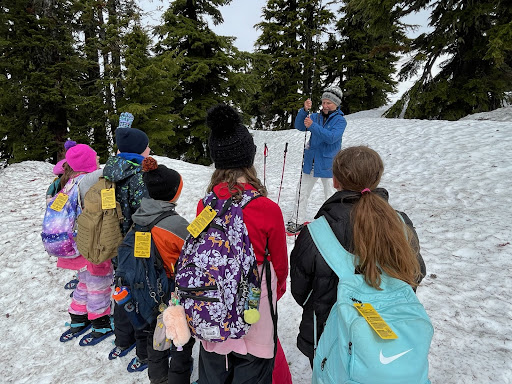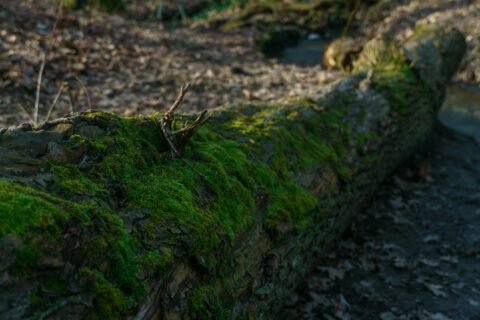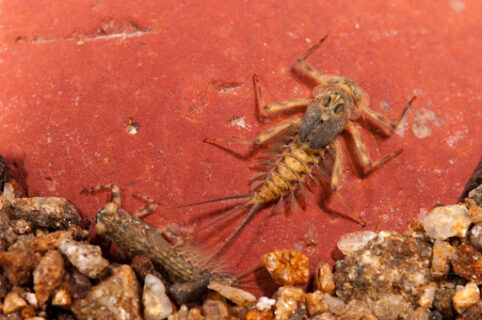Lifestyle
Teaching, Worms, and Plastic-Eating Fungi: Sally White’s Story


Before we get into our interview with Sally, I’d like to take a moment to introduce the point of this new member interview series. Hope starts on the individual level, long before it reaches the global level – this individual-global relationship is a central pillar of Leave No Trace.
So these are small-scale tales of hope, directly from your fellow Leave No Trace members and believers, with the purpose of inspiring further hope and change. Beyond that, I am fascinated by the relationship between the sciences and the infinitely harder art of educating the next generations.
I met recently with longtime Leave No Trace member Sally White to discuss this juxtaposition. A lifelong educator to elementary- and middle-school children, Sally and I chatted about teaching Leave No Trace values to younger generations, about the allures of composting with worms, and about some heartening, recognized work done by one of the 4th grade classes she instructs.
Here’s hoping her words give you the same hope she gives me.

M: Hi Sally! Wonderful to meet with you – you’ve got quite the story to share about a big discovery by some little children. However, let’s back up and start with introductions. Would you mind sharing your journey?
Sally: I grew up in the farming country of southeastern Minnesota. We lived in an old farmhouse on the edge of town – raising chickens, geese, pigs, and caring for a nice-sized garden. A nurse log was my favorite place to just sit. Back then, everyone was a wild child – that was one of the fun things about growing up in the so-called old days.
We had all kinds of adventures outside. That dried up, though, when I was 12 and we moved from Minnesota to southern California. Life kept going – I got married, had three children, and was busy doing all kinds of volunteer work at their school.
Some of the teachers at the school I was volunteering at told me, “you need to be a teacher.” So I became one! Got my degree, my Masters, and then, after a few years, I actually landed my dream job of being a middle school science teacher.
Everyone thinks that’s a crazy dream! No it’s not!
Middle school kids are ridiculously intelligent and not afraid to try new things and think outside of the box. They’re fascinating and easily fascinated.
I spent 20 years as a professional teacher before retiring in 2012. Every year since then, though, I’ve been teaching environmental education to summer camps, outdoor schools, and all types of school-age classes in the Pacific Northwest.

M: And throughout your life, you’ve always loved the outdoors and nature. How have you brought the principles and ethos of Leave No Trace into the classroom?
Sally: Goodness, the ideas behind Leave No Trace were in my mind since I was a kid. It was in my mind and my husband’s mind when we would take kids out into the national and state parks when they were growing up.
We’d see folks walking off trail, throwing litter, acting like generally poor stewards of our planet. Ruining the experience for kids.
My husband and I were like, “we should write a book about this!” And, well, that’s when we found Leave No Trace and were so thankful to find a community of folks already writing about and training people on these things.
In my classrooms, I found that teaching kids scales of impact helped. Sometimes kids think “but it’s just me, it’s just one piece of litter.” Talking to them about “well, what if everyone acts like they are just the only one?” That approach seems to work in kids’ minds.
More than anything, though, I learned the importance of getting feedback from the children about their experience in nature. We’d always ask the kids after sessions what they’d like to do, how they thought we could improve our course. They really came up with great ideas.
One thing that blew all of us adults away was the kids specifically asking for quiet time in the wilderness. We’d send them out for three minutes in a place within eyesight of adults – no books, no phones, no assignments. Just three minutes sitting quietly in nature… and then they’d come back and tell us “can we make it longer?”
Their favorite thing was quiet time in nature. How nice is that?
M: I love that, quiet time in nature is literally my favorite thing to do. You’ve talked about the intelligence of kids – but kids are oftentimes also the font of unintentional comedy. What’s the funniest moment you’ve had as an outdoor educator?
Sally: The one that struck me most recently – this was actually last week – was a class’s first experience with, ahem, “quicksand.”
We took some kids to Silver Falls State Park, to an accessible part of the stream where you have to cross. They were looking for macroinvertebrates in the stream. They knew that their feet could dislodge macroinvertebrates and were very deliberate and slow as they crossed, but one went a little bit farther ahead.
He caught his foot in the deposition – the mucky part of the mud. He’s pulling and pulling and can’t get that foot out, and then the other kids start to notice one by one.
“No, no he’s in quicksand!” the kids are yelling, “he’s going to die!”

After the adults got through laughing – it sounds bad, I know – but after we got through laughing, everyone came back save for the one kid who was still stuck. He’d gotten his boot stuck under a rock, so he walked back barefoot and I went and pulled it out.
It was one of those good scary events for a class. It allowed us as a group to sit down and have a talk about “when children start screaming, what do adults think? What should we all do?”
By the end, the kid who had gotten stuck was laughing and telling us, “that wasn’t very smart to run ahead, but it was very fun.” He’d actually been most concerned about losing his Mom’s boot.
M: Since you, as most of us, were a child once – where do you think this strong tie to the outdoors first originated for you?
Sally: As a child, I was the oldest in my family so I didn’t have much free time. I’m 75 now, so you know I had lots of chores as a kid. I’d find nature between responsibilities by always walking out in the field, disappearing from everyone.
My grandma, who lived about three blocks away, had a garden I would get lost in. It wasn’t even being in the wilderness – it was just being outside in my grandma’s little garden, playing.
I just didn’t have any use for being inside.
M: Me neither. You and I actually connected over your email – not too many people have “worms” in their address! Would you mind sharing why you have that? Don’t worry, I won’t share your full email.
Sally: I really, really love worms. The word “worms” has always been in my emails and I still maintain many collections at home. I teach vermicomposting to anyone who wants to learn. It was such a great segue to so many things in the classroom – work smarter, not harder, and worms are a great teaching cheat code.
Writing assignments? Worms.
Science? Worms.
Measurements? Worms.
My favorite thing about them is what they actually do – there’s several different types of worms. I work with composting worms who only go about six inches down into the soil, but also move up into my composting bins. They’re the ones who do the final decomposition of anything that’s been killed out in nature, and they do the final decomposition of my dinners.
I got started when a friend, a graphic artist, showed me his 50-gallon trash can outside in Las Vegas, buried in the shade under a tree and it was filled with worms.
He said, “You can do this in the classroom” and I said “sure, why not.”
I have had a worm bin in my classroom and at my home ever since. Now teachers of all kinds are using it – they ask me for some worms to get started and I’m happy to help.
M: I love it and have a vermicomposting bin myself. So, as a fellow vermicomposter, what do you wish more people knew about it?
Sally: Most importantly – worms are the original recyclers. Before we even had “recycle” as a word, the worms were doing it.
It’s their castings – their worm poop – which, by the way, is a great way to get kids involved in it. Kids love absolutely anything related to poop. Sometimes it is easier to not resist it.
So I’d have some castings out and would ask the kids, “What does it smell like?”
“Soil” or “the dirt” or “the forest” are the typical answers – they never guess that it is worm poop. Decomposition making all those nice smells.
What those worms are doing is making the very best plant food that can be made. If you feed them a whole lot of the same thing, that won’t be as good for the plants and it’s not healthy for the worms either.
Kids resonate with it. They want to help the worms make the best plant food.
M: Okay, let’s hear about these fourth graders. Who are they, what is it they discovered, and how did they go about it?
Sally: Everybody is into STEM – I think it needs to be STEAM, since art is a part of everything. Mixing imagination and innovation, and that’s how this came about.
Where I work mostly now, with a Catholic school in Salem, Oregon, they have robots at the school quite often. Then there was a fourth grade group who wanted to get in on it, but weren’t as concerned about robotics. They liked nature.
Out here in Oregon, everyone eventually volunteers to clean debris from the beaches. The kids kept finding smaller and smaller and smaller pieces of plastic. They were already aware that the ocean’s plastic situation was dire. And that something needed to be done.
They started checking on “what can eat plastic?”
Their lead teacher, Maureen, lives down the street and would work with them after school again and again. I was brought in and asked – “Miss Sally, are there any mushrooms or fungi that eat plastic?”
I knew there are some that eat oil in oil spills, so I told them to research. We taught them how to research – how to vet websites and see if it is trustworthy science.
Eventually – and this was all by them – they zeroed in on the microbes that eat plastic. During their lifetime much has been discovered by scientists. The kids are after the hard plastics, and in their research they found that these hard plastics are also blowing up into Oregon’s mountains.
So the next piece was – “how are we going to get the plastic out of the sand earlier?”
They asked about LIDAR.
I didn’t tell them about LIDAR. I told them about how I watched Star Trek growing up, and how there was a communicator that decades later became the flip phone and now we have the familiar cell phone that does so much more.
I told them, “What you’re thinking about now about LIDAR, think of how to expand it technologically. What could be done?”
Well, goodness, they did just that. They wrote research papers, participated in interviews, and actually won a top national award for their age group. Tops for their age group in the 2022 Toshiba National Science Teachers’ Association Exploravision Competition.
I’m so proud of them.
M: Fantastic to merge that Star Trek idea with them. You know, the first paper on biodegradation of plastics by fungi was only released in 2011. Now we have over 50 varieties of plastic-eating fungi documented, and the kids are inspired to find new ways to think about it in relation to other technologies! What’s next for these intrepid student-scientists?
Sally: Right now [at time of interview] they are in Washington, DC. They’re ten years old and solving some of our problems!
They’ve got more thinking to do, but the young folks give me hope.
M: We’ll leave how this could be groundbreaking to the researchers. I want to talk about how to help kids struggling with environmental news. I remember being terrified of radioactive waste as a child and feeling such relief as an adult when it came out that there’s radiation-eating fungi in Chernobyl. What would you say to those young folks who might be feeling scared or defeated about the future of the environment?
Sally: If they put their mind to it, they can do something about it.
I mean, look at energy. We used to think that energy could only be created by burning wood. Then coal and oil. Then we found out that might not be the best solution as we’ve discovered the consequences of these products.
Now, at the school, the 2nd graders are building wind turbines out of recycled materials. 2nd graders!
We try to focus the conversation down to a lot of personal choices. We don’t try to say doom-and-gloom around little children. We start with their own individual choices, then talk about, well, how do you change the next group?
Present them with a problem more at their age level and they’ll come up with solutions that need to be refined as they age.
When I’m at the playground now, I see this in action. Kids picking up pieces of trash that aren’t theirs and running it over to the trash can.
And if they see that it fell from someone’s pocket? There’s so much less belittling going on than previous generations. It is just “hey, did you mean to drop this?”
Those are the kinds of things that we like to see – that there’s children learning how to advocate without shaming.
M: Thanks, Sally. Last question – if you had to boil down your life lessons into one sentence for others, what would you say?
Sally: We have only one planet, and it’s the only one we can live on – it’s going to take all of us to make it livable for all of its inhabitants.
Let’s protect and enjoy our natural world together
Get the latest in Leave No Trace eNews in your inbox so you can stay informed and involved.
